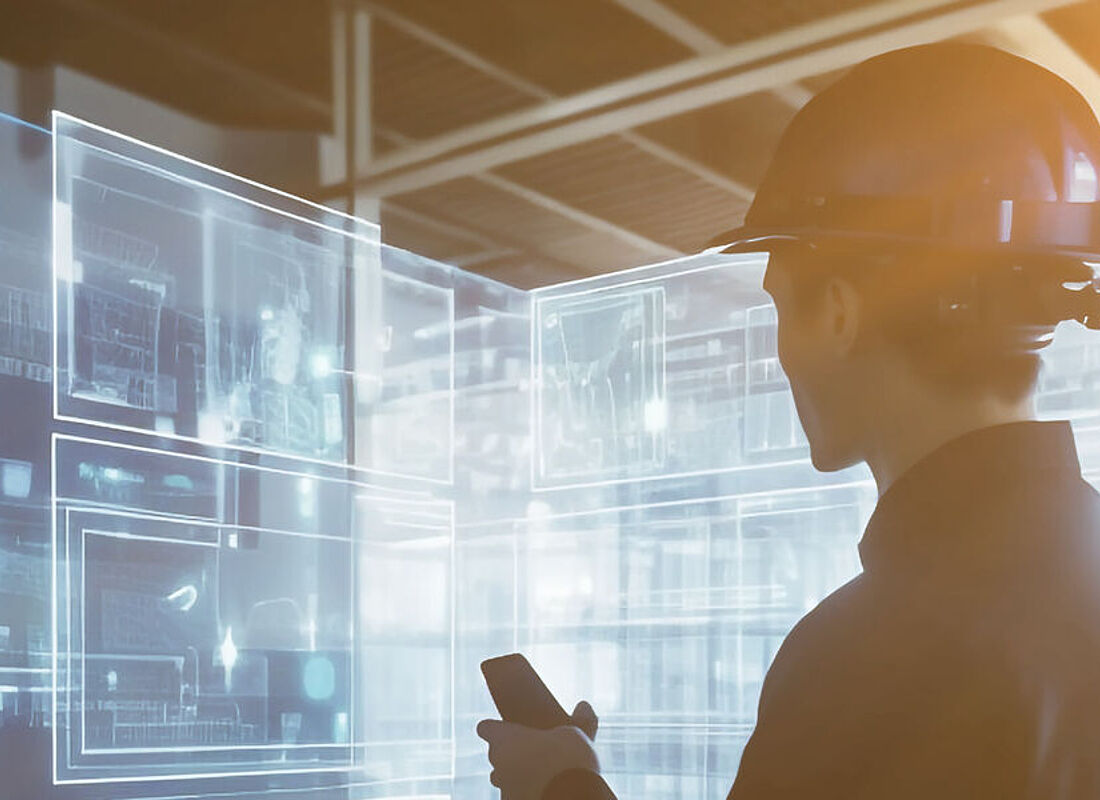
- Error predictions
- ideal operating parameters
- simple training
Precise heat treatment: use the Digital Twin for optimization.
When hardening steel and other heat treatment processes in the metal industry, numerous process parameters and requirements must be precisely adhered to. As a result, you cannot adjust and optimize during operation without risking product quality.
The technology of the digital twin promises a way out, with which you can simulate the effects of changes in real time and ensure and improve the quality of heat treatment processes.
Simulate individual plants or entire factory floors in a digital environment!
What exactly is a digital twin?
A digital twin is a virtual copy of a physical object or system, for example a plant for hardening steel from industrial furnace construction. The digital twin records all sensor data, replicates processes and ultimately behaves exactly like its real counterpart.
What benefits do digital twins offer?
You can benefit in many ways from a digital twin in heat treatment in the metal industry:
- Representation of the entire plant (physical and digital operations) and simulation of processes with the possibility of testing different operating modes and selecting the most efficient one.
- Real-time monitoring: faults and deviations are immediately apparent.
- Remote monitoring and control: technicians can monitor plant status, adjust parameters and diagnose problems without having to be physically on site.
Education and training: A Digital Twin provides a safe environment for education and training of operating personnel.
Take advantage of automatised heattreatment with Digital Twins

Failure prediction
The Digital Twin enables measures for predictive maintenance.

Ideal operating conditions
Test different configurations of your plant and choose the most efficient one.

Knowledge transfer
Train according to fixed processes in simulations without risk.

Knowledge transfer and training
Digital Twins allow you to preserve process knowledge and experience in the field of heat treatment in the metal industry. You can use this stored know-how to train employees and help them to better understand and safely apply complex concepts, procedures and processes.
New employees can also learn the procedures and operation of the heat treatment plant in a virtual context without using the actual plant. This reduces potential risks and errors during commissioning and improves workplace safety.
How to take your heat treatment in the metals industry to the next level
Process simulation
With a digital twin, heat treatment processes such as carburizing steel can be mapped and analyzed before they are implemented in reality. This allows you to test process sequences and process parameters and identify potential problems and bottlenecks without spending physical resources. This allows you to drive process development much faster and more cost-effectively.
Real-time monitoring
Digital Twin technology allows real-time monitoring of heat treatment in the metals industry. Sensors can transmit recorded data such as temperatures, pressures and flow rates directly to the digital twin. This allows you to detect deviations from defined parameters at an early stage and make necessary adjustments in real time.
Process optimization
A digital twin gives you the opportunity to virtually test different parameters in processes such as carburizing steel while you continue to produce as normal. By analyzing the data provided by the digital twin, you can identify trends and patterns that help you optimize process performance. This can improve the efficiency and quality of heat treatment in the metals industry without adversely affecting actual production processes and quality.
Fault detection and diagnosis
By comparing real-time data with the expected results in the Digital Twin, errors and deviations become quickly apparent. This enables problems to be identified quickly and corrective measures to be implemented without wasting time.
Du möchtest mehr über den Nutzen digitaler Zwillinge für die Wärmebehandlung in der Metallindustrie erfahren?
Would you like to learn more about the benefits of digital twins for heat treatment in the metal industry?
Then get in touch with us and benefit from:
- Ideal operating processes for heat treatment.
- Training for employees on simulated processes without risk
Make an appointment for a non-binding consultation!

